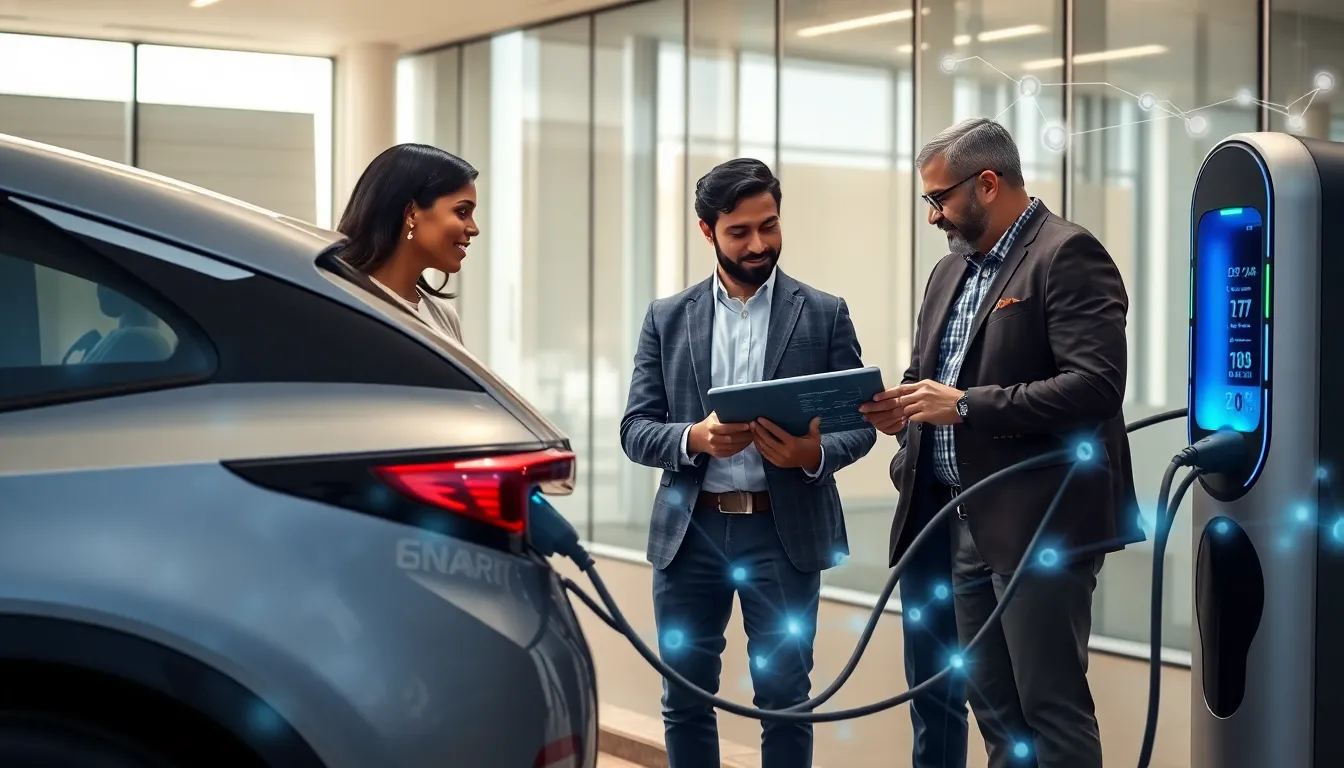Imagine a world where your electric vehicle (EV) not only knows when you need it charged but also decides the best time to soak up energy from the grid. Sounds like science fiction, right? Welcome to the age of smart charging. This innovative technology is revolutionizing how we think about powering our rides. With smart charging, not only can your EV charge efficiently, but it can also play nice with renewable energy sources, saving you money and reducing strain on the power grid. Let’s jump into the electrifying world of smart charging, all while keeping a light-hearted touch to ensure you leave with a smile, and maybe a bit wiser about the future of driving.
Table of Contents
ToggleUnderstanding Smart Charging Technology

Smart charging goes beyond merely plugging in your electric vehicle when you’re done driving for the day. It involves a complex interplay of software, hardware, and communication technologies that coordinate the charging process based on various factors. This technology allows EVs to connect to the grid and optimize their charging times based on energy availability and cost. In simpler terms, it’s like having a smart partner who meticulously plans your outings based on traffic conditions and weather forecasts, but instead, it’s all about energy usage.
The core idea hinges on two-way communication between the vehicle, the charging station, and the electric grid. Think of it as a dance, where all players coordinate their moves to achieve the best possible outcome. By leveraging advanced algorithms and real-time data, smart charging maximizes efficiency and minimizes costs. It can even adjust itself based on fluctuating electricity rates throughout the day, so you’re not just getting charged, you’re getting the best deal possible.
Benefits of Smart Charging for Electric Vehicles
The perks of smart charging are too good to ignore. First, there’s the undeniable financial advantage. Smart charging can lower electricity costs by scheduling charging sessions during off-peak hours. This means that instead of paying premium rates, you can charge your vehicle when energy is cheaper. Who doesn’t love saving a bit of cash?
But it’s not just about cost savings. Smart charging also supports grid stability. By balancing the load on the electrical grid during peak and off-peak times, it helps prevent blackouts and reduces the need for additional power plants. When your electric vehicle draws power at times when it’s abundantly available, you’re contributing to a more sustainable energy ecosystem.
Last but certainly not least, smart charging paves the way for an integration with renewable energy sources. For those with solar panels, it means optimizing the times your vehicle charges with the sun. In essence, it’s not just about getting from A to B: it’s about doing it in a way that’s financially savvy and environmentally friendly.
How Smart Charging Works
So, how does this high-tech charging wizardry actually function? At its core, smart charging combines innovative technologies and infrastructure to execute its magic.
Integration With Renewable Energy Sources
Imagine a sunny day where your solar panels are generating excess energy. Smart charging can use this surplus to charge your EV instead of sending it back to the grid. This offers a seamless integration, ensuring your vehicle charges when renewable energy is plentiful. It’s a win-win situation, yielding lower energy costs while promoting clean energy consumption.
Demand Response Capabilities
Smart charging systems can also participate in demand response programs. These programs incentivize consumers to reduce or shift their electricity use during peak demand periods. With this capability, your EV can “communicate” with the grid, determining the best times to charge based on current grid demand, so optimizing energy usage and reducing stress on local infrastructure.
Impact on the Grid
The impact smart charging has on the electrical grid is profound. By efficiently managing the energy load, it helps alleviate the strain during peak hours. This proactive approach not only enhances grid reliability but also curtails the need for costly infrastructure upgrades. Think of it as a well-planned urban layout that stops traffic jams before they start.
Also, as the number of electric vehicles continues to rise, smart charging will play a pivotal role in ensuring the stability of the grid. With smart charging, energy suppliers can forecast demand more accurately, allowing for better grid management. It’s like having a crystal ball for energy consumption. This predictive capability enhances resilience, ensuring we keep the lights on, even as electric vehicles populate our roads.
Challenges and Considerations
While the promise of smart charging is exciting, several challenges linger on the horizon. First up is the need for advanced infrastructure. Existing charging stations must be upgraded or new ones installed to support smart charging capabilities. It’s akin to swapping out traditional traffic signals for high-tech smart lights that adjust based on real-time traffic flow.
Data security also raises a red flag. With two-way communication being a cornerstone of smart charging, ensuring that this data is secure from potential hacks is critical. There’s a delicate balance between convenience and privacy that must be maintained.
Finally, public awareness and education on smart charging benefits and operations are crucial. If potential users don’t understand the value, adoption rates will likely stall. Education campaigns can help bridge this gap, turning skepticism into acceptance.
Future Trends in Smart Charging
The future of smart charging looks promising, to say the least. Technological advancements are set to enhance capabilities significantly. For instance, vehicle-to-grid (V2G) technology allows EVs not just to draw power from the grid but also return energy back when needed. This transforms parked EVs into power sources that can support the grid during high-demand periods.
Also, as battery technology advances, the need for charging frequency may decrease. Future batteries could store more energy, allowing for longer driving ranges and reduced reliance on charging stations. This could reshape how we think about charging altogether.
Also, regulatory and policy changes will play an essential role in fostering a supportive environment for smart charging. Governments are increasingly recognizing the need for sustainable energy solutions, paving the way for innovations that will benefit consumers and the environment alike.



